Bojangles est un film américain de genre Drame réalisé par Joseph Sargent avec Peter Riegert
Bojangles (2001)

Si vous aimez ce film, faites-le savoir !
Bojangles is an American biographical drama that chronicles the life of entertainer Bill "Bojangles" Robinson (1878–1949). This film boasts some incredible tap dance routines and a complicated, if not unique, interpretation of the main character by Gregory Hines, who also served as an executive producer.
Starting with Robinson's funeral, including what looks like archival footage of the event, the film then plays out the biography in a straightforward manner as a flashback, both in color and black-and-white.
[...]Voir plus...
Synopsis
En 1916, Bill "Bojangles" Robinson était un artiste de vaudeville à succès et considéré comme le meilleur danseur de claquettes de sa génération. Au sommet de sa carrière, il était l'artiste noir le mieux payé, mais malgré toute la joie qu'il donnait aux autres, sa vie était tout sauf heureuse...Acteurs

Peter Riegert
(Marty)

Gregory Hines
(Bojangles)

Kimberly Elise
(Fannie)

Savion Glover
(Newcomer)

Aaron Meeks
(William)

Martin Roach
(Percy)
Bande annonce de Bojangles
Bluray, DVD
Streaming / VOD
Commentaires
Postez un commentaire :
Suggestions de films similaires à Bojangles
Il y a 60 films ayant les mêmes acteurs, 47 films avec le même réalisateur, 71518 ayant les mêmes genres cinématographiques (dont 56 ayant exactement les mêmes 4 genres que Bojangles), 6250 films qui ont les mêmes thèmes, pour avoir au final 70 suggestions de films similaires.Si vous avez aimé Bojangles, vous aimerez sûrement les films similaires suivants :

Sursis pour l'orchestre (1980)
, 2h30Réalisé par Daniel Mann, Joseph Sargent
Genres Drame, Historique, Musical
Thèmes Religion, Musique, Politique, Religion juive
Acteurs Vanessa Redgrave, Jane Alexander, Maud Adams, Christine Baranski, Robin Bartlett, Marisa Berenson
Note72%





Des Juives retenues dans un camps de concentration parviennent à garder la vie sauve en échange de représentations pour leur geôliers nazis.

Tap (1989)
, 1h51Réalisé par Nick Castle
Origine Etats-Unis
Genres Drame, Comédie musicale, Action, Musical
Thèmes Danse, La musique, Musique
Acteurs Gregory Hines, Sammy Davis Jr., Suzzanne Douglas, Joe Morton, Savion Glover, Terrence E. McNally
Note64%





Max Washington (Gregory Hines) vient de sortir de prison, il avait été arrêté pour avoir participé à un cambriolage. En prison, une seule chose l'aidait à survivre : le tap.
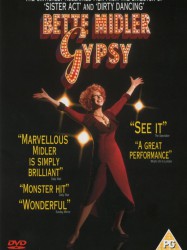
Gypsy (1993)
, 2h33Réalisé par Emile Ardolino
Origine Etats-Unis
Genres Drame, Biographie, Comédie, Comédie dramatique, Musical
Thèmes Musique, Adaptation d'une pièce de théâtre, Adaptation d'une comédie musicale
Acteurs Bette Midler, Cynthia Gibb, Peter Riegert, Edward Asnere, Elisabeth Moss, Lacey Chabert
Note71%





Basé sur l'autobiographie de Gypsy Rose Lee, ce film fait pour la télévision - auparavant un succès à Broadway et un film de 1962 - décrit la vie et l'époque d'une strip-teaseuse et de sa mère dominatrice.
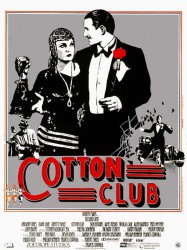
Cotton Club (1984)
, 2h7Réalisé par Francis Ford Coppola
Origine Etats-Unis
Genres Drame, Comédie musicale, Musical, Policier, Romance
Thèmes Mafia, La musique, Le racisme, Le jazz, Musique, Gangsters
Acteurs Richard Gere, Gregory Hines, Diane Lane, Lonette McKee, Bob Hoskins, James Remar
Note64%





En 1928, la prohibition a engendré une vague de violence qui a déferlé sur l'Amérique. À New York, au cabaret Cotton Club, la pègre, les politiciens et les stars du moment goûtent les plaisirs interdits. Un trompettiste blanc et un danseur noir sont emportés dans une tourmente où l'amour et l'ambition se jouent en entrant au service d'un trafiquant d'alcool.

La Femme du pasteur (1996)
, 2h4Réalisé par Penny Marshall
Origine Etats-Unis
Genres Drame, Science-fiction, Comédie, Comédie dramatique, Comédie romantique, Fantasy, Musical, Romance
Thèmes Noël, Religion, Ange, Musique
Acteurs Denzel Washington, Whitney Houston, Courtney B. Vance, Gregory Hines, Jenifer Lewis, Loretta Devine
Note57%





Henry Biggs (Courtney B. Vance) est le pasteur d’une église baptiste à New York qui est confrontée à des difficultés financières et un déclin de l’assistance. Il néglige de plus en plus sa famille, et en réponse à l'une de ses prières, l'ange Dudley (Denzel Washington) vient à son secours. Mais il tombe amoureux de la femme du pasteur, Julia (Whitney Houston).
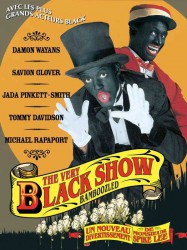
The Very Black Show (2000)
, 2h15Réalisé par Spike Lee
Origine Etats-Unis
Genres Drame, Comédie, Comédie dramatique, Musical
Thèmes La musique, Le racisme, La télévision, Le hip-hop, Musique
Acteurs Damon Wayans, Savion Glover, Jada Pinkett Smith, Tommy Davidson, Michael Rapaport, Mos Def
Note66%





Pierre Delacroix est l'unique scénariste afro-américain de la grande chaîne de télévision CNS (Continental Network System). Malgré des idées d'émissions innovantes, Pierre ne parvient pas y à faire sa place. Son patron, Thomas Dunwitty lui pose alors un ultimatum : il doit trouver LE concept ou il sera renvoyé.

The Tic Code (2000)
, 1h31Réalisé par Gary Winick
Origine Etats-Unis
Genres Musical
Thèmes La musique, Le jazz, Musique
Acteurs Gregory Hines, Chris Marquette, Robert Iler, Polly Draper, Tony Shalhoub, Carol Kane
Note66%





The film tells the story of a young boy, Miles Caraday (Marquette), a jazz piano prodigy who has Tourette syndrome, and his divorced mother Laura Caraday (Draper). Miles has a school friend, Todd (Desmond Robertson) who seems not to be bothered by Miles' condition. Miles wants to become a jazz pianist against the wishes of his classical-oriented instructor Miss Gimpole (Carol Kane). At a local nightspot, Miles becomes friends with a jazz saxophonist, Tyrone Pike (Hines), who also has Tourette's but has learned ways to cover up his condition.

Toute la ville danse (1938)
, 1h44Réalisé par Victor Fleming, Josef von Sternberg, Julien Duvivier
Origine Etats-Unis
Genres Drame, Biographie, Musical, Romance
Thèmes Danse, La musique, Lié à la musique classique, Musique
Acteurs Luise Rainer, Miliza Korjus, Lionel Atwill, Henry Hull, Hugh Herbert, Curt Bois
Note64%





En 1844, à Vienne, le jeune Johann Strauss compose des valses et, grâce à la chanteuse Carla Donner, il est vite célèbre. Strauss épouse Poldi et paraît avoir trouvé le bonheur. Mais la reconnaissance qu'il a vouée à Carla Donner se change bientôt en un sentiment plus tendre.
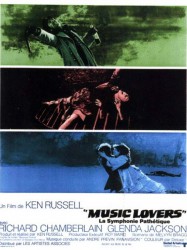 , 2h2
, 2h2Réalisé par Ken Russell
Origine Royaume-uni
Genres Drame, Biographie, Musical, Romance
Thèmes La musique, Sexualité, Homosexualité, Lié à la musique classique, Musique, LGBT, LGBT
Acteurs Richard Chamberlain, Glenda Jackson, Kenneth Colley, Christopher Gable, Max Adrian, Andrew Faulds
Note71%





Le film retrace la vie de Piotr Ilitch Tchaïkovski. Jeune professeur au Conservatoire de Musique de Moscou, Tchaïkovski donne son tout premier concert pour piano et orchestre devant une salle bondée d'étudiants, de professeurs et de mélomanes. À l'accueil enthousiaste réservé au compositeur, Rubinstein, directeur de l'établissement et mentor du jeune homme, répond par une sévère critique et formule des conseils que Tchaïkovski s'empresse de rejeter. Alors qu'il est susceptible de perdre son emploi, Tchaïkovski reçoit de Nadejda von Meck, une riche veuve qui admire son talent, l'octroi d'une rente pour qu'il se consacre exclusivement à la composition.
[...]Voir plus...
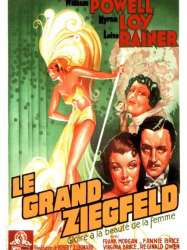
Le Grand Ziegfeld (1936)
, 3h5Réalisé par Robert Z. Leonard
Origine Etats-Unis
Genres Drame, Biographie, Musical, Romance
Thèmes La musique, Musique
Acteurs William Powell, Myrna Loy, Luise Rainer, Frank Morgan, Toni Mannix, Fanny Brice
Note65%





L'itinéraire du célèbre producteur américain, Florenz Ziegfeld, qui a commencé sa carrière dans le cirque, et qui grâce à son génie de la publicité et sa technique de la scène a créé les shows les plus spectaculaires de Broadway à New York.
 Connexion
Connexion